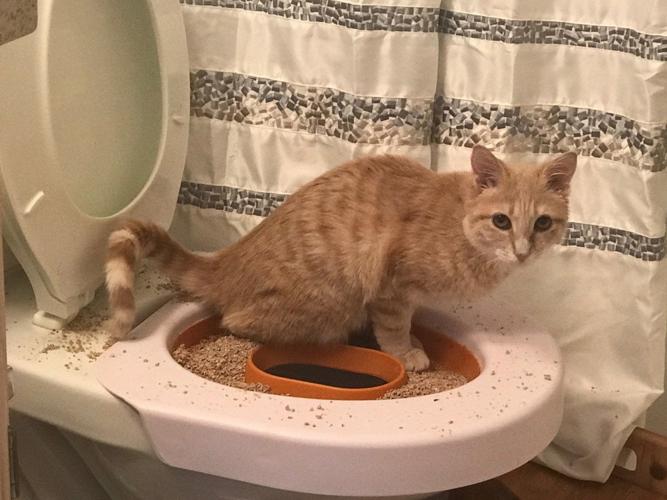They are making several good pointers relating to How to Dispose of Cat Poop and Litter Without Plastic Bags in general in the article below.

Intro
As feline proprietors, it's necessary to bear in mind how we get rid of our feline close friends' waste. While it might appear hassle-free to flush cat poop down the bathroom, this method can have damaging repercussions for both the environment and human health and wellness.
Ecological Impact
Purging pet cat poop presents harmful pathogens and parasites into the water supply, positioning a substantial threat to marine ecosystems. These impurities can adversely influence marine life and concession water top quality.
Wellness Risks
In addition to environmental concerns, flushing cat waste can additionally posture wellness dangers to people. Cat feces might include Toxoplasma gondii, a parasite that can cause toxoplasmosis-- a possibly extreme disease, specifically for pregnant women and people with damaged immune systems.
Alternatives to Flushing
Fortunately, there are more secure and a lot more accountable methods to get rid of cat poop. Take into consideration the adhering to options:
1. Scoop and Dispose in Trash
The most common approach of taking care of feline poop is to scoop it right into a naturally degradable bag and throw it in the garbage. Be sure to use a committed trash scoop and take care of the waste immediately.
2. Use Biodegradable Litter
Select naturally degradable feline trash made from products such as corn or wheat. These clutters are environmentally friendly and can be securely gotten rid of in the garbage.
3. Bury in the Yard
If you have a yard, consider hiding cat waste in a marked area far from vegetable yards and water sources. Make certain to dig deep sufficient to prevent contamination of groundwater.
4. Mount a Pet Waste Disposal System
Invest in a family pet waste disposal system particularly made for feline waste. These systems make use of enzymes to break down the waste, minimizing smell and ecological effect.
Verdict
Accountable pet dog ownership prolongs beyond supplying food and shelter-- it also includes correct waste administration. By avoiding flushing feline poop down the commode and going with alternative disposal techniques, we can minimize our environmental impact and shield human health and wellness.
Why Can’t I Flush Cat Poop?
It Spreads a Parasite
Cats are frequently infected with a parasite called toxoplasma gondii. The parasite causes an infection called toxoplasmosis. It is usually harmless to cats. The parasite only uses cat poop as a host for its eggs. Otherwise, the cat’s immune system usually keeps the infection at low enough levels to maintain its own health. But it does not stop the develop of eggs. These eggs are tiny and surprisingly tough. They may survive for a year before they begin to grow. But that’s the problem.
Our wastewater system is not designed to deal with toxoplasmosis eggs. Instead, most eggs will flush from your toilet into sewers and wastewater management plants. After the sewage is treated for many other harmful things in it, it is typically released into local rivers, lakes, or oceans. Here, the toxoplasmosis eggs can find new hosts, including starfish, crabs, otters, and many other wildlife. For many, this is a significant risk to their health. Toxoplasmosis can also end up infecting water sources that are important for agriculture, which means our deer, pigs, and sheep can get infected too.
Is There Risk to Humans?
There can be a risk to human life from flushing cat poop down the toilet. If you do so, the parasites from your cat’s poop can end up in shellfish, game animals, or livestock. If this meat is then served raw or undercooked, the people who eat it can get sick.
In fact, according to the CDC, 40 million people in the United States are infected with toxoplasma gondii. They get it from exposure to infected seafood, or from some kind of cat poop contamination, like drinking from a stream that is contaminated or touching anything that has come into contact with cat poop. That includes just cleaning a cat litter box.
Most people who get infected with these parasites will not develop any symptoms. However, for pregnant women or for those with compromised immune systems, the parasite can cause severe health problems.
How to Handle Cat Poop
The best way to handle cat poop is actually to clean the box more often. The eggs that the parasite sheds will not become active until one to five days after the cat poops. That means that if you clean daily, you’re much less likely to come into direct contact with infectious eggs.
That said, always dispose of cat poop in the garbage and not down the toilet. Wash your hands before and after you clean the litter box, and bring the bag of poop right outside to your garbage bins.
https://trenchlesssolutionsusa.com/why-cant-i-flush-cat-poop/

I was made aware of that report about How to Dispose of Cat Poop and Litter Without Plastic Bags from a friend on another blog. In case you liked our article please don't forget to pass it around. Thanks for your time. Kindly come by our blog back soon.
Book A Service